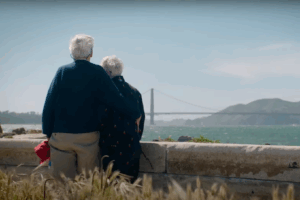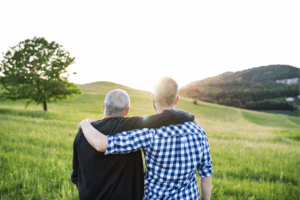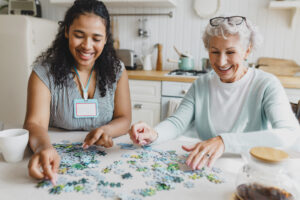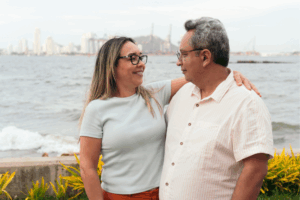When my cousin and her family of four small children got caught in the 2017 Hurricane Harvey in Houston, they weren’t rescued from their flooded home by official rescue personnel; they waited in the attic until a friend came with a boat to take them to safety. Sometimes, the quickest, most reliable assistance comes from our friends and community connections—especially during disasters when there are a lot of people in need of help.
For older adults who often find themselves isolated in their homes and in the community, it is extra important to create connections and identify support networks so you know where to turn during a natural disaster or emergency. Emergency preparedness for seniors in the San Francisco Bay Area may not be based on hurricane danger, but it’s important to be alert and ready for earthquakes, high winds, drought, fires, flash floods, and landslides. If you or an older adult you know could use some tips and guidelines for localized disaster planning, look no further.
Planning for Emergency Preparedness for Seniors in the SF Bay Area
For older adults to be truly prepared for emergencies in the Bay Area, you should have the following six things in place:
- A contact list and communication plan.
- Medical, personal, and practical supplies to last at least three days.
- An action plan for staying safe or getting to safety.
- A meeting place that your support network agrees upon.
- A list of local resources and connections, so you can stay informed before and during a disaster.
- Paperwork that effectively presents your identity and medical needs.
The time it takes to pull all of these items and plans together will be infinitely valuable should you ever need to put your kits and plans to work. By the time an emergency arises, it may be too late to access necessary supplies and establish communication with helpful people in your community. Here are some steps and things to keep in mind as you’re getting your disaster preparedness plan in order:
Create a contact list and communication plan: As my cousin discovered in a major hurricane, the people in your community can be some of the most important and reliable help during a disaster. By reaching out to people who live near you in the Bay Area and some who live a bit further away (and might experience a regional disaster’s impact a bit differently), you are forming a mutually beneficial support network. Maintain an up-to-date list of all contact options and decide on a strategy for the group to check in on each other in the midst of a disaster, such as a phone tree. Keep a copy of this list by your phone and another with your emergency supply kit.
Have supplies for three days: Having a wide range of emergency supplies can save your life in case you are isolated and don’t have access to basic necessities. The Red Cross offers an extensive list of recommended items for your kit here, or you can purchase a ready kit. It is a good idea to have three days worth of supplies that you can take with you if evacuating and two weeks worth of supplies to keep in your home.
Plan for getting to safety: Different types of disasters will call for different plans to ensure your safety. The California Department of Aging offers tip sheets for various emergency situations, including power outages, extremely hot weather, and disaster preparedness for pets. Review these guidelines with family, friends, and caregivers, and design basic plans for evacuation, travel, necessary medical treatment, wheelchair accessibility, and utility shut-off for safety when appropriate.
Establish a reliable meeting place: Certain emergency conditions may leave us without the use of phones and other digital communication. With your group of community contacts—as well as friends and relatives who live out of the area—decide on a meeting place where you will all go in the event of evacuation and communication failure. It’s probably a good idea to have a backup location as well, in case emergency conditions make the first place inaccessible.
Create a list of resources: Part of your emergency preparedness plan is to stay informed of any news or forecasts that will alert you to potential disasters—by television, radio, and websites. Once a disaster is underway, besides calling 9-1-1, there are plenty of other resources you can turn to. Familiarize yourself with these resources now, so you’ll know where to reach when acting quickly to stay safe, and keep a list of these contacts handy by the phone and in your emergency kit, too.
- DisasterAssistance.gov offers wide resources to meet individuals’ needs nationwide, including temporary shelter, food and water, and financial assistance.
- Ready.gov is an informative resource as you’re preparing your emergency plans.
- ShakeOut.org will help you to prepare for potential earthquakes. International ShakeOut Day is October 19th, and millions of people in earthquake-prone areas will be practicing safety drills and reviewing emergency plans.
- 211BayArea.org and dialing 2-1-1 from your phone will connect you with important local services and resources, including evacuation routes, shelter, food, and other assistance during a disaster.
- The San Francisco Department of Emergency Management suggests various ways of staying informed about local emergencies. You can find a list of helpful links to alert and warning systems here.
- SF72.org is a great place to go if you’re still not sure where to start with emergency preparedness planning. Get prepared and connected with help from the community.
Gather important paperwork: Now is the right time to organize all important documentation that could come in handy in any emergency situation. Think of this paperwork packet as something a stranger could pick up and quickly learn how to help you with any personal or medical needs. Make copies of identifying documents, insurance information, medical records, medical treatment directives, emergency contacts, and all of your medications and dosages. Let this list be a jumping off point. You’ll likely find other pieces of information that are important to include for a full profile of your unique needs.
Why Are Community Connections So Important for Disaster Preparedness for Seniors?
According to the neighborhood network SF72, “Actual emergencies look more like people coming together than cities falling apart.” SF72 promotes the idea of getting connected before disasters, so we’re prepared when the time comes—and because life will be better for those connections in the meantime. No one should be bound to live in isolation—least of all our Bay Area neighbors with many years behind them and plenty of experience and wisdom to share.
Organizations like Institute on Aging (IOA) strive to connect older adults to their Bay Area communities even as they thrive and live independently at home. Living independently need not exclude vibrant support systems that are constantly evolving and growing for the good of everyone involved. So, if you or an older adult you know could use some of those invaluable friends and connections to lean on, especially in times of trouble, reach out to organizations like IOA and SF72’s networks today.
Disaster preparedness planning is not about living on the edge and in fear of what could happen. On the contrary: By being aware of the emergencies possible in our Bay Area home, we can rest assured, knowing that we have a confident plan should the need arise.
At Institute on Aging, we’re here to help you uncover community resources, as well as your own inherent strengths and personal resources. Give us a call at (415)750-4111 to find out more about the programs and services we offer for aging adults, adults with disabilities, caregivers, and families.







